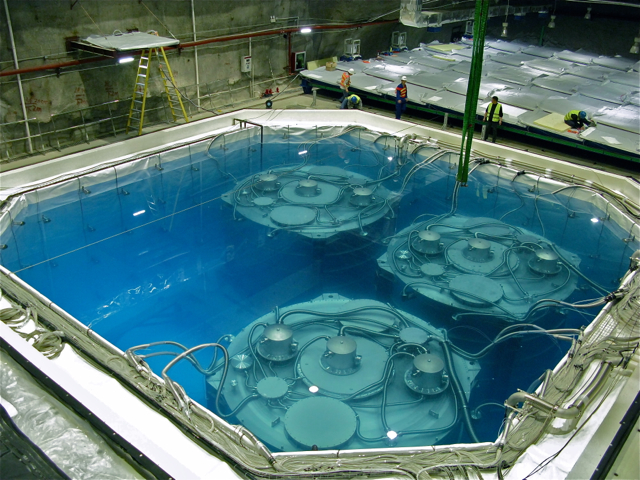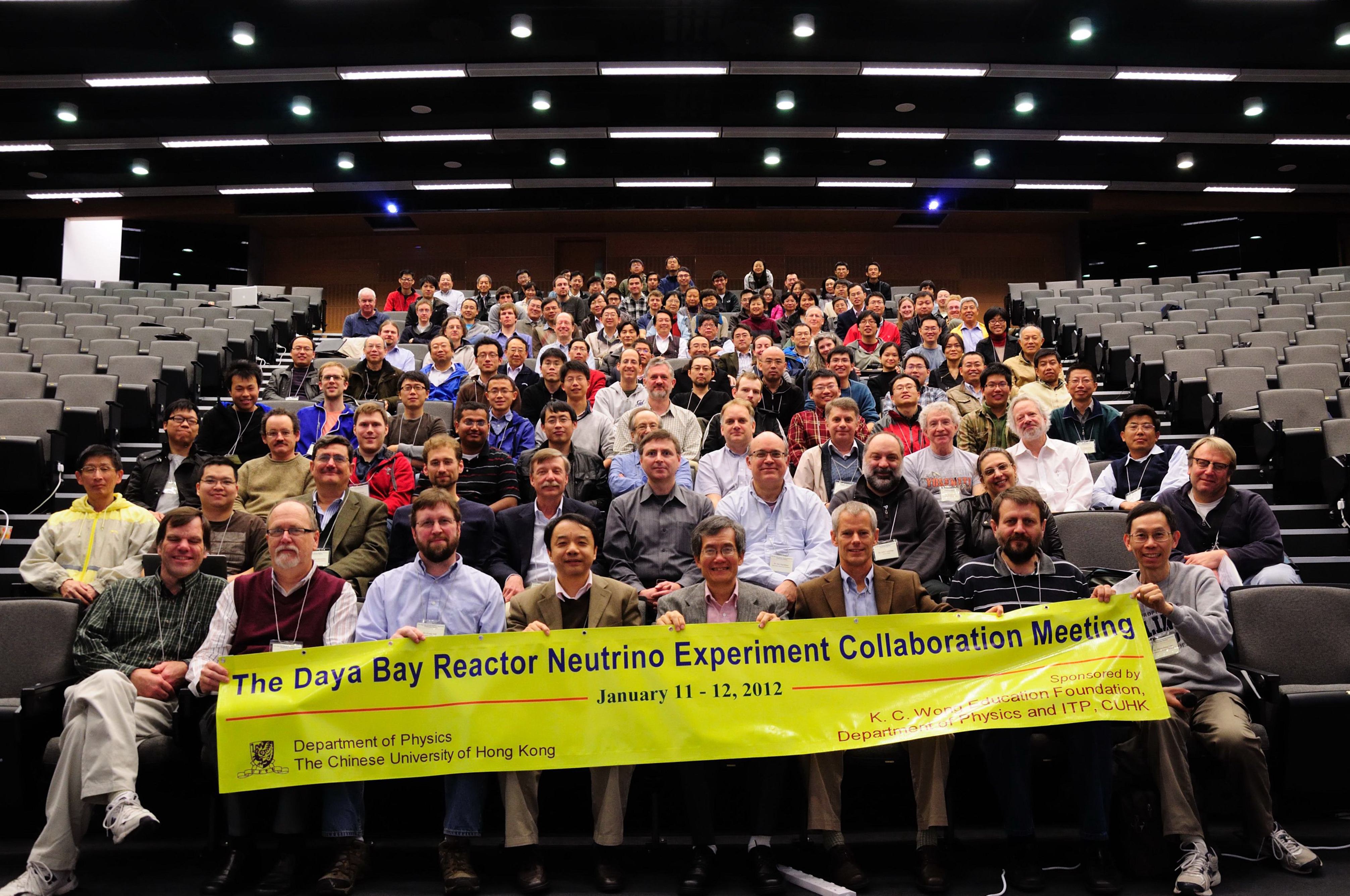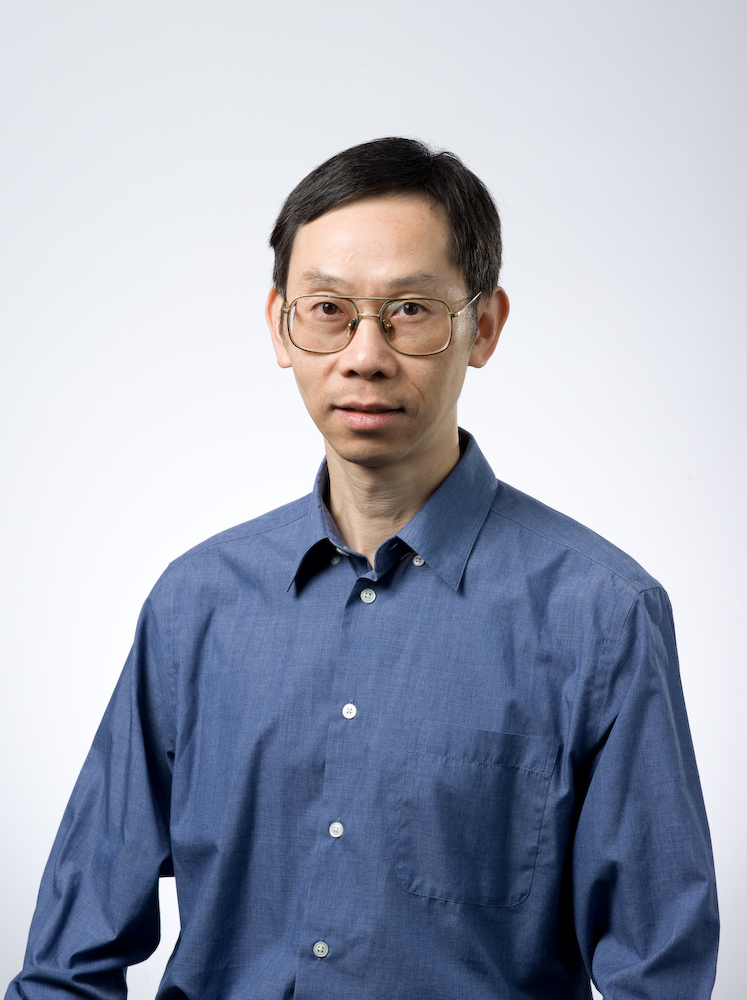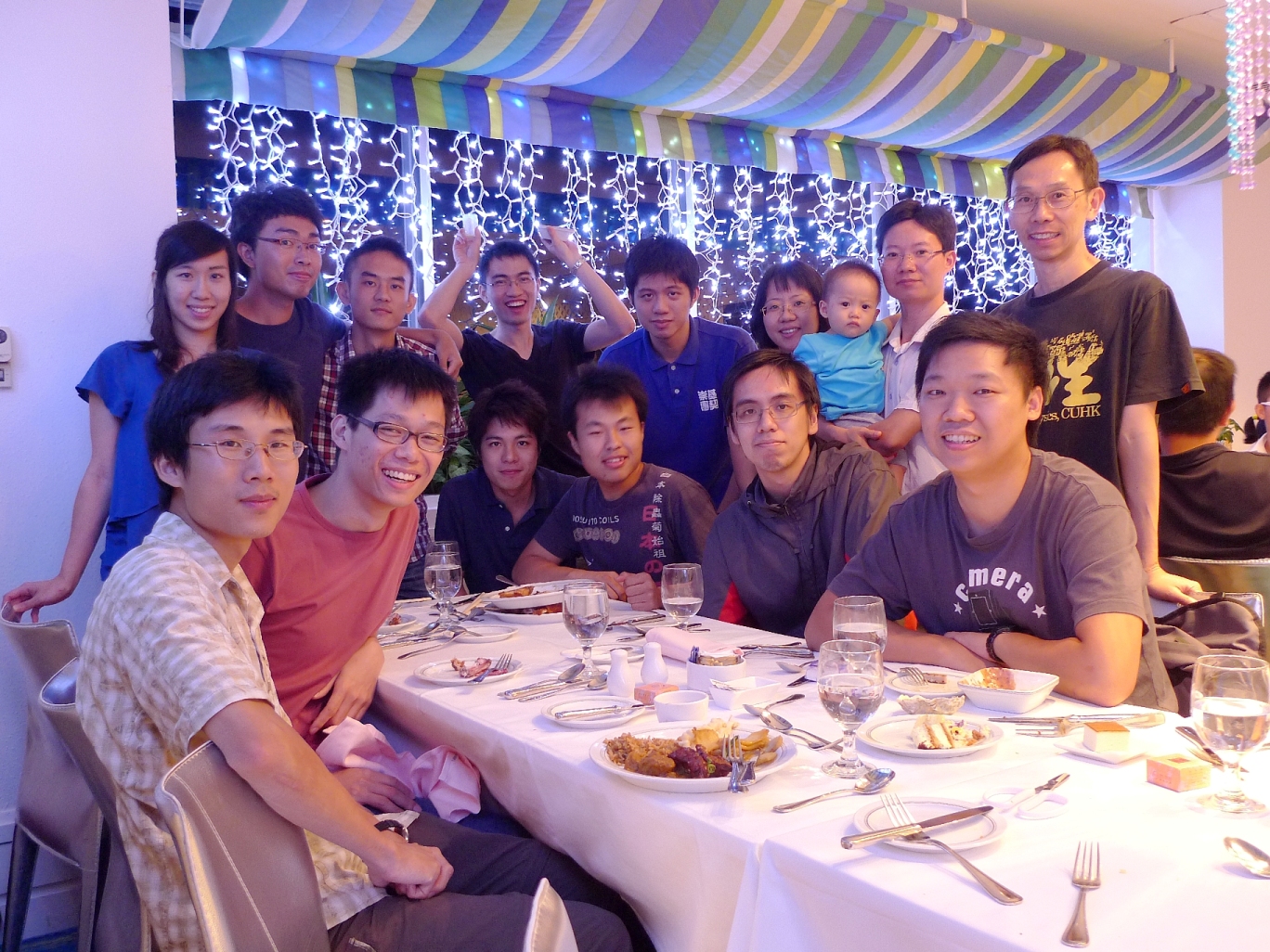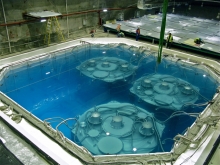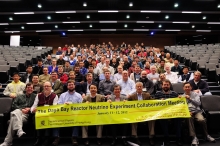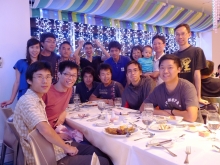CUHK
News Centre
Daya Bay Collaboration Announces First Results: A New Kind of Neutrino Transformation DiscoveredCUHK Leads HK Research Team in Major International Physics Research to Unveil New Page in Cosmology and Astrophysics Research
The Daya Bay Reactor Neutrino Experiment (the Experiment) today (8 March) announced its discovery of a new type of neutrino transformation, opening a gateway to a new understanding of fundamental physics by giving constraints and guidance to the construction of the Grand Unification Theory, in which all fundamental interactions are unified. It may also eventually solve one of the biggest problems in Big Bang cosmology – why there is far more matter than antimatter in the universe today. A research team from The Chinese University of Hong Kong (CUHK) and University of Hong Kong (HKU) has been an active member of the Daya Bay Collaboration since its formation in 2004. The discovery results from eight years of hard work of this multinational collaboration formed by over 200 scientists and engineers from 39 institutes in mainland China, the U.S., Hong Kong, Taiwan, Russia and the Czech Republic.
The Hong Kong team, with Prof. Chu Ming-chung, Department of Physics, CUHK as the principal investigator and Prof. John Leung and Prof. Jason Pun, Department of Physics, HKU as co-investigators, has designed and built subsystems for detector monitoring, background measurement and data acquisition of the Experiment. The team has also been running experiments in a small underground laboratory in Aberdeen Tunnel to support research and development of the Experiment. Over 40 CUHK Physics students, including many undergraduates, have contributed to the effort.
Neutrinos, the wispy particles that flooded the universe in the earliest moments after the Big Bang, are continually produced in the hearts of stars and other nuclear reactions. Being electrically neutral, they respond only to weak nuclear force and even weaker gravity, passing mostly unhindered through everything from planets to people. Traveling at close to the speed of light, the three basic neutrino types – electron, muon, and tau neutrinos – transform from one type to another, but such neutrino oscillation is extremely difficult to detect. The challenge of capturing these elusive particles has inspired the Daya Bay Collaboration in the design and precise placement of its detectors. From December 2011 to February this year, scientists in the Collaboration observed tens of thousands of interactions of electron antineutrinos, caught by six massive detectors buried in the mountains adjacent to the powerful nuclear reactors of the China Guangdong Nuclear Power Group. Located at Daya Bay and nearby Ling Ao, these reactors produce millions of quadrillions of elusive electron antineutrinos every second.
The copious data revealed for the first time a strong signal of a new type of oscillation in which the electron-typed neutrinos morph into the other two types of neutrinos. The rate of this process is measured with unmatched precision and characterized by a parameter named theta one-three (written θ13). The Daya Bay Collaboration’s first results indicate that theta one-three, expressed as sin2(2 θ13), is equal to 0.092 plus or minus 0.017. ‘This is a new type of neutrino oscillation, and it is surprisingly large,’ said Dr. Wang Yifang of China’s Institute of High Energy Physics (IHEP), co-spokesperson and Chinese project manager of the Experiment. ‘Our precise measurement will complete the understanding of neutrino oscillation and pave the way for the future understanding of matter-antimatter asymmetry in the universe.’
Prof. Chu Ming-chung said, ‘It is an once-in-a-lifetime opportunity to determine the value of a fundamental constant of nature, and theta one-three is the key to some of the most important outstanding puzzles in fundamental physics too. I am particularly proud that many CUHK Physics students have contributed to the Experiment. We are all thrilled to play a part in this significant discovery.’
‘The first Daya Bay results show that theta one-three, once feared to be near zero, instead is “comparatively huge”,’ said Dr. Luk Kam-Biu of the U.S. Department of Energy’s Lawrence Berkeley National Laboratory (Berkeley Lab) and the University of California at Berkeley. ‘Nature was good to us. In coming months and years the initial results will be honed by collecting far more data and reducing statistical and systematic errors.’ Dr. Luk is the co-spokesperson of the Daya Bay Experiment and heads U.S. participation.
‘This is really remarkable,’ said Dr. Wenlong Zhan, vice president of the Chinese Academy of Sciences and president of the Chinese Physical Society. ‘We hoped for a positive result when we decided to fund the project, but we never imagined it could come so quick!’
The results have opened the door to further investigations and will influence the design of future neutrino experiments to determine the most massive type of neutrino, the difference between neutrino and antineutrino oscillations, and to find out why there is more matter than antimatter in the universe, or if there is any matter in the universe at all.
Three antineutrino detectors submerged in pure water in the Daya Bay Far Hall, each being 5m in height and diameter. The Hong Kong team designed and built a subsystem in each of the detectors.
The Daya Bay Collaboration consists of scientists from mainland China, the U.S, Hong Kong, Taiwan, Russia and the Czech Republic.


